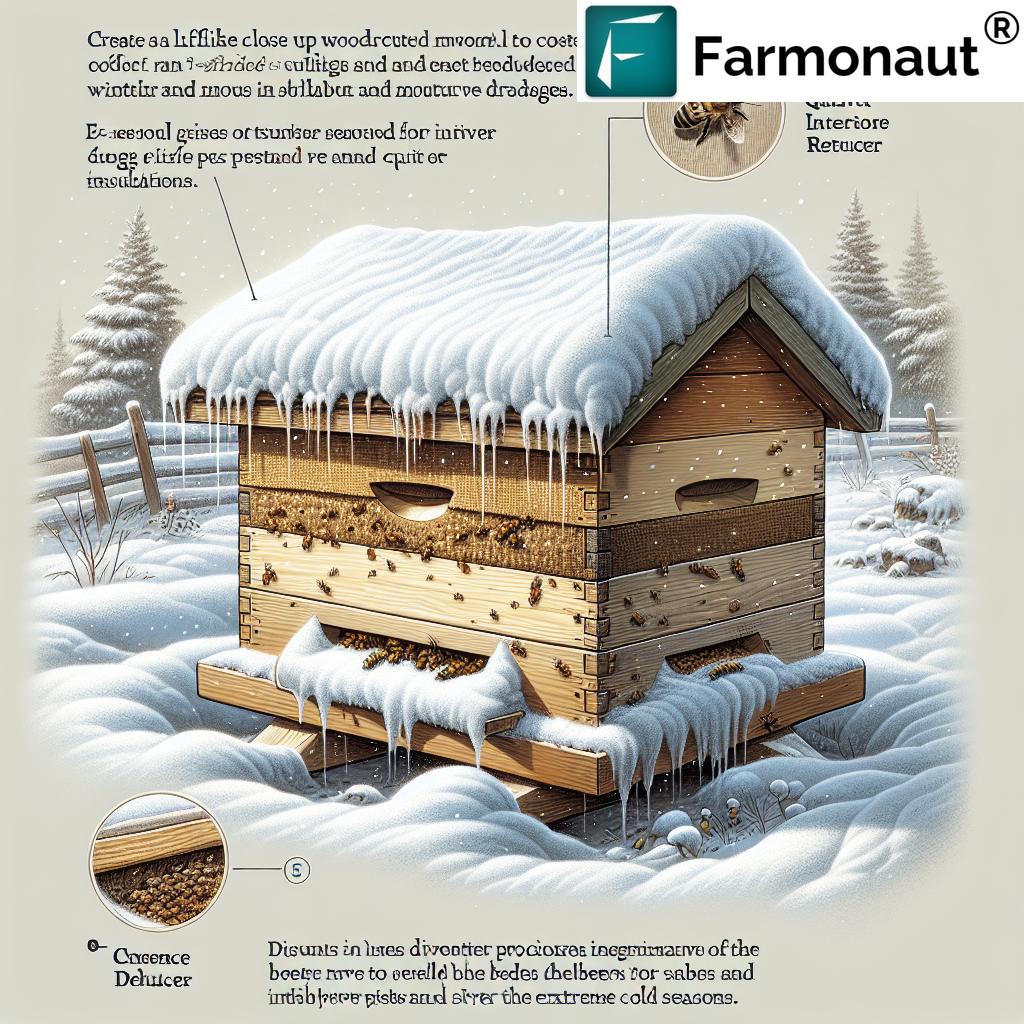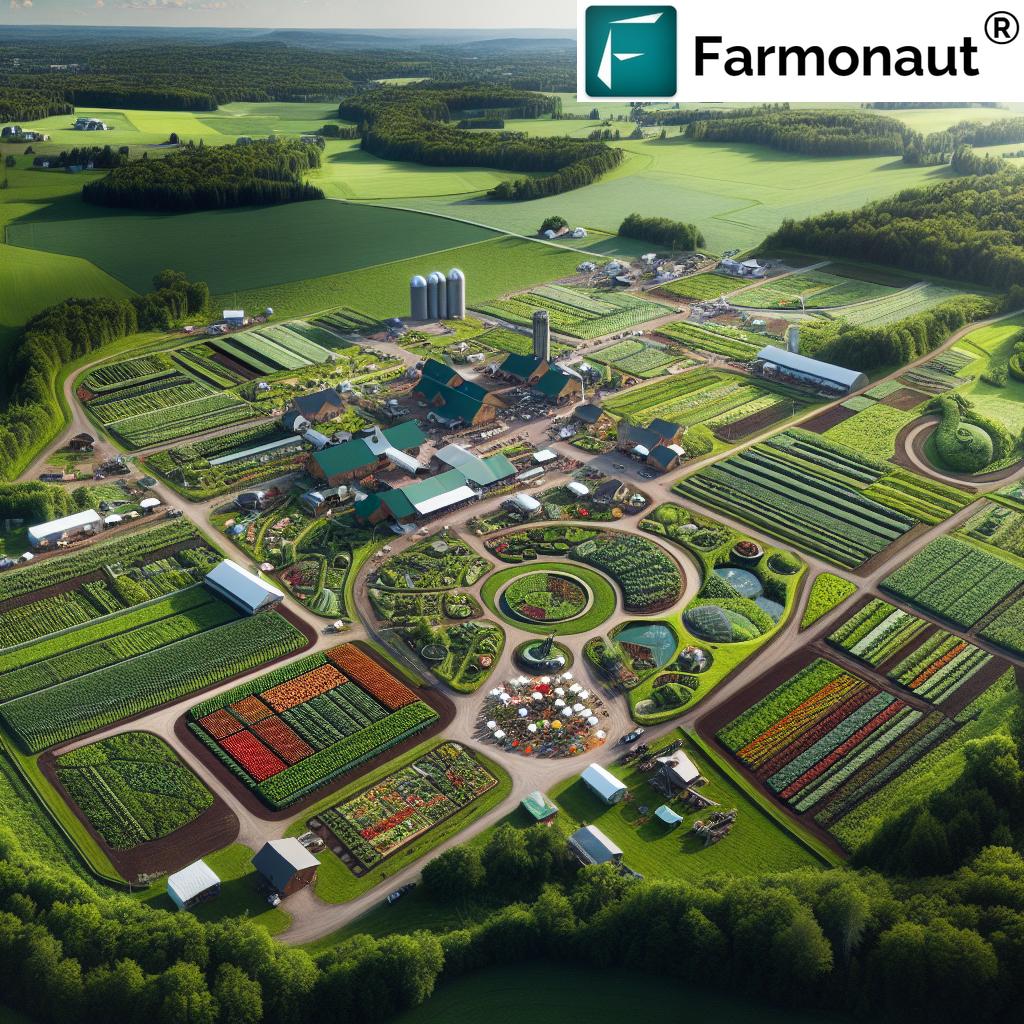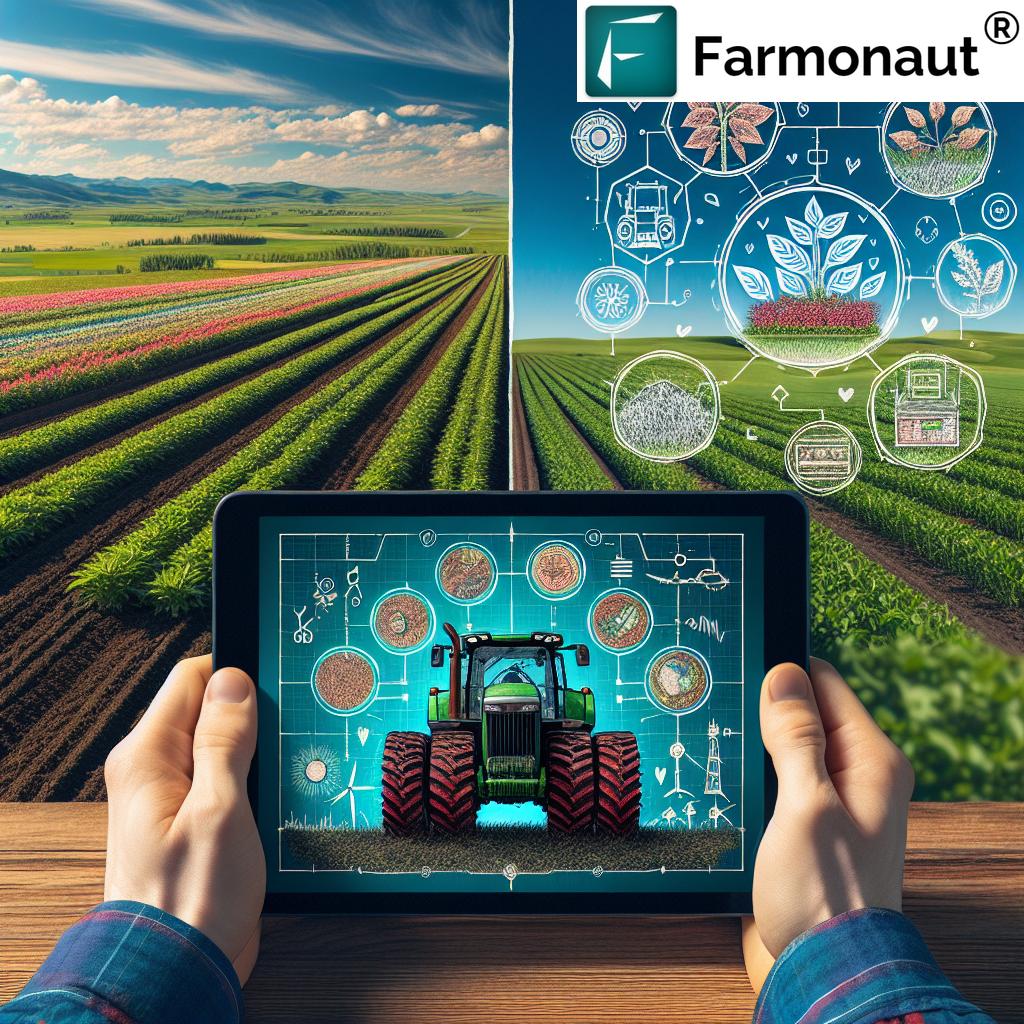Farmland for Sale Canada: 2025 Trends & Opportunities
“Canadian farmland prices are projected to rise by 6% in 2025, reflecting strong demand and limited supply.”
- Canada’s Farmland Landscape in 2025: Trends, Opportunities, and Challenges
- Overview of Farmland in Canada
- Key Market Trends Shaping Farmland for Sale Canada in 2025
- Farmland Ownership & Sales Dynamics
- 2025 Canadian Farmland Market Trends Overview (Table)
- Regional Outlook: Provinces Leading Farmland Canada in 2025
- Opportunities for Farmland Investors and Farmers in 2025
- Sustainability and Technology Trends
- Challenges Facing Canadian Farmland in 2025
- Policy and Government Initiatives: 2025 Focus
- The Role of Satellite Technology in Canadian Farmland’s Future
- FAQs: Canadian Farmland 2025 and Beyond
- Conclusion: Navigating the Future of Farmland for Sale in Canada
Canada’s Farmland Landscape in 2025: Trends, Opportunities, and Challenges
At the intersection of a rapidly evolving agricultural sector and global pressures for sustainability, Canada farmland continues to shape the future of the country’s economy and food security. In 2025, the farmland Canada market is marked by strong demand, robust development, persistent challenges, and transformative opportunities for farmers, investors, and stakeholders. From Ontario, Alberta, Saskatchewan, and Manitoba to emerging regions, this guide offers an in-depth exploration of the market dynamics, technological shifts, evolving policy frameworks, and the key role of innovation in farmland management.
Overview of Farmland in Canada: Size, Diversity & Output
Canada boasts a vast landscape with approximately 68 million hectares of fertile farmland, predominantly used for crop production and livestock grazing. The diversity in soil and climate supports a wide range of crops—from traditional grains to specialty horticultural products:
- Grains: Wheat, barley, canola, corn, soybeans
- Specialty: Fruits, vegetables, pulses, and value-added crops
- Prairie provinces (Saskatchewan, Manitoba, Alberta): Regarded as Canada’s grain heartland
- Ontario & Quebec: Leading in horticulture (fruits, vegetables) and livestock
This production diversity makes Canada a global powerhouse in agriculture, catering to domestic and export demands. Understanding these patterns is essential for anyone considering farmland for sale in Canada—whether as a farmer, investor, or policymaker.
Key Market Trends Shaping Farmland for Sale Canada in 2025
Current trends in farmland Canada are influenced by a combination of market dynamics, policy shifts, technological advancements, and shifting patterns of demand:
- Rising Prices: Upward pressure due to limited availability and urbanization encroaching on agricultural land
- Sustainability: Increasing emphasis on soil health, climate-smart farming, and carbon footprinting
- Technological Shifts: Integration of AI, satellite-based monitoring, precision agriculture, and data-driven solutions (learn about Farmonaut’s carbon footprinting solutions)
- Investor Interest: Institutional and foreign buyers seeking stable, appreciating assets
- Shift in Buyer Priorities: Over 70% of buyers in 2025 prioritize sustainability and technological innovation (*see trivia below*)
- Global Demand: Canadian crops remain competitive in international markets
“Over 70% of Canadian farmland buyers in 2025 are expected to prioritize sustainability and tech adoption in their investments.”
Farmland Ownership & Sales Dynamics in Canada
The structure of ownership and nature of sales in farmland Canada continues to evolve. The market features a mix of traditional farmers looking to expand, agribusiness corporations consolidating lands for large-scale production, and institutional/foreign buyers seeking long-term stable returns. This dynamic is driving:
- Upward pressure on prices: Reflecting strong interest and limited availability of quality lands, particularly near major urban centers
- Premium commands: Farmland near urbanized areas is fetching higher pricing due to alternate uses (e.g., residential, industrial)
- Younger buyers face barriers: Limited affordable access for new generation farmers
- Institutional investors: Increasingly active, viewing farmland as an inflation hedge and sustainable asset class
2025 Canadian Farmland Market Trends Overview
| Province/Region | Avg. Farmland Price (CAD/acre, 2025 est.) | Y-o-Y Price Change (%) | Est. Available Land (acres) | Top Opportunities | Main Challenges |
|---|---|---|---|---|---|
| Ontario | $20,800 | +7% | 11 million | Horticulture, Tech Adoption, Circular Economy | Urban Sprawl, Entry Barriers |
| Saskatchewan | $2,700 | +5.5% | 36 million | Grain, Pulse Exports, Sustainability | Soil Degradation, Water Management |
| Manitoba | $3,300 | +6% | 12 million | Cereal Crops, Tech Scaling | Flood Risk, Regulatory Changes |
| Alberta | $4,600 | +6.8% | 20 million | Livestock, Specialty Grains, Digital AgTech | Drought, Policy Uncertainty |
| British Columbia | $13,200 | +6.2% | 2 million | Organic, Fruit Crops, Innovation | Climate Impact, High Entry Cost |
| Atlantic Canada | $3,700 | +4.7% | 1.8 million | Niche Markets, Land Reclamation | Urbanization, Investment Return |
This data-driven overview illustrates how Ontario commands premium prices due to urban proximity and horticulture specialization, while Saskatchewan and Manitoba offer vast, cost-effective land for large-scale production. British Columbia is increasingly popular for organic and specialty products, albeit with high entry costs.
Regional Outlook: Provinces Leading Farmland Canada in 2025
Ontario: Diversification and Rising Land Pressure
- Horticulture leader, especially in fruits and vegetables
- Remains attractive due to crop and market diversity
- Urban encroachment driving up prices, limiting expansion for new farmers
- Technological adoption in circular economy practices (Farmonaut’s traceability solutions enable transparency for Ontario’s supply chains)
Saskatchewan: Canada’s Grain Heartland
- Largest provider of grain and pulse crops
- Lower prices and vast availability suit traditional farmers seeking to expand
- Facing challenges in soil degradation and water management
- Pioneering regenerative agriculture and digital farm management
Manitoba: Innovation and Flood Management
- Strong in cereal crops and livestock
- Emphasis on technology adoption for risk management (floods, seasonal changes)
- Rising investor interest in tech-driven agricultural initiatives
Alberta: Livestock and Specialty Production
- Significant contributor in livestock and specialty grains
- Facing drought risk and environmental regulation shifts
- Digital resource management tools increasingly in use (Farmonaut’s fleet management helps optimize agricultural and equipment logistics)
British Columbia & Atlantic Canada: Organic and Niche Expansion
- B.C. stands out for organic, fruit, and specialty products
- Atlantic Canada leverages its smaller scale to attract niche market investors and land reclamation projects
Opportunities for Farmland Investors and Farmers in 2025
The coming years present unique opportunities for both farmers and investors in farmland for sale Canada. Key growth areas include:
- Green Innovation: Emphasis on carbon-neutral practices, soil health, and regenerative agriculture is driving demand for new skills and technology (Farmonaut’s carbon footprinting tools can support these initiatives)
- Tech-Enabled Farming: Increased adoption of satellite-based monitoring, AI advisory, and data management for smarter decision making. Our platform supports real-time management via API and developer integration
- Organic and Niche Markets: New lands in British Columbia and Atlantic Canada present opportunities for organic and specialty production
- Crop Diversification: Responding to global market trends via mixed cropping, new product development, and supply chain traceability
- Circular Economy: Waste reduction and closed-loop systems (traceability for sustainable supply chains)
- Smart Risk Management: Using satellite-based verification for loans and insurance reduces risk and improves access to financing
In 2025, farmers who embrace technology, innovation, and sustainable management will be well-positioned to capitalize on rising demand and expanding markets in farmland Canada.
Sustainability and Technology Trends Transforming Farmland in Canada
In addition to traditional expansion, the pace of technological advancements and sustainability-driven initiatives is reshaping farmland in Canada:
- Precision Agriculture: Use of satellite imagery, soil mapping, and variable-rate application increase yields and lower resource use. Farmonaut’s satellite-driven platform leads in delivering such insights for crop health, soil conditions, and productivity.
- AI and Big Data: Artificial Intelligence helps optimize planting schedules, pest management, and market timing.
- Blockchain Traceability: Blockchain tools ensure supply chain transparency for food safety and export standards.
- Resource Management: Advanced fleet management solutions for machinery, logistics, and water conservation.
- Environmental Monitoring: Real-time data on soil health, vegetation index (NDVI), carbon footprint, and emissions make compliance easier.
- Climate Adaptation: Satellite-based forecasting and scenario analysis drive resilience planning.
We recognize the importance of innovation: Our Jeevn AI advisory system and satellite monitoring tools provide critical decision support for Canadian farmers, boosting yields while reducing environmental impact.
If you’re scaling up your land management, consider our large-scale farm management solutions for comprehensive oversight, multi-farm monitoring, and seamless reporting in 2025.
Challenges Facing Canadian Farmland in 2025
Despite immense potential, Canadian farmland faces notable challenges that demand attention:
- Climate Change: Unpredictable weather, drought risk, shifting growing zones, and flood threats (Manitoba and Alberta)
- Urban Encroachment: Urbanization near major centers threatens prime farmland, especially in Ontario and Quebec
- Rising Farmland Prices: Economic barriers for young farmers and smaller buyers
- Soil Degradation: Overuse and inefficient practices impact sustainability (notable in Saskatchewan and Alberta)
- Policy and Regulatory Complexity: Land transfer regulations and evolving zoning laws
- Market Volatility: Dependence on global commodity cycles and trade relationships
- Labor Shortages: Demographic shifts and workforce scarcity in the rural sector
Leveraging technology and sustainable management techniques is critical to overcoming these hurdles while ensuring the continued productivity and prosperity of farmland in Canada.
Policy and Government Initiatives: 2025 Focus
Both federal and provincial governments in Canada are taking a proactive stance to shape policy direction and support the agricultural sector:
- Farmland Protection: Legislation to curb urban sprawl and preserve prime agricultural land
- Stewardship Incentives: Grants and cost-sharing for sustainable practices, cover cropping, and soil conservation
- Innovation Grants: Funding for adoption of new technologies and agtech R&D
- Youth and Entry Support: Loans, insurance products, and training programs for new farmers entering the market
- Climate Adaptation Funding: Infrastructure for resource management and risk reduction
Adherence to these frameworks is essential for sustained growth and for maximizing the value of any farmland for sale Canada future.
The Role of Satellite Technology in Canadian Farmland’s Future
As satellite, AI, and blockchain technologies reach mainstream adoption in Canada’s rural sector, stakeholders gain unprecedented tools for land monitoring, crop management, and transparency.
At Farmonaut, we are dedicated to making satellite-driven insights accessible and actionable. Our platform blends real-time monitoring, AI-powered advisory, blockchain-based traceability, and resource management into an integrated solution for Canada farmland stakeholders.
Whether you are a farmer looking to optimize yields, an investor requiring up-to-date data on land conditions, or a policymaker needing informed evidence for resource allocation, our technologies empower efficient, transparent, and scalable decisions in the 2025 landscape and beyond.
- Satellite-based crop and soil monitoring helps identify yield potential and detect issues early
- Jeevn AI advisory recommends real-time interventions for maximizing field performance
- Blockchain and traceability tools protect supply chain integrity (food safety, organic certifications)
- Fleet management tools streamline machinery use, reducing costs and carbon emissions for large Canadian operations
- Environmental impact monitoring offers carbon footprint tracking for sustainability compliance
Farmonaut API and Developer Docs let advanced users and enterprises plug our insights directly into existing systems.
FAQ: Farmland for Sale Canada & Market Insights 2025
What is the average price of farmland for sale in Canada in 2025?
Average farmland prices vary by region. In 2025, Ontario averages around $20,800/acre, Saskatchewan $2,700/acre, Alberta $4,600/acre, Manitoba $3,300/acre, British Columbia $13,200/acre, and Atlantic Canada $3,700/acre.
Prices reflect factors such as local demand, soil quality, proximity to urban centers, and development potential.
What are the major factors influencing farmland sale prices in 2025?
The top factors are urbanization pressure, land availability, proximity to infrastructure and cities, soil productivity, climate risk, and growing preference for sustainable, tech-enabled land management.
Are foreign buyers still active in the Canada farmland market?
Yes. Institutional and foreign investors continue to show strong interest in Canadian farmland as a stable, appreciating asset. Provincial regulations may limit foreign ownership in some cases.
How does technology support farmland management in Canada?
Advancements like satellite-based monitoring, AI decision support, and blockchain traceability optimize crop and soil performance, support risk reduction, and provide transparency across the supply chain. View details about Farmonaut’s API and integration tools.
What challenges should investors or new farmers consider in 2025?
Key challenges include high land prices in top regions, soil health degradation, climate risks (such as droughts and floods), labor shortages, and navigating regulatory complexity. A robust technology and sustainability framework is vital for success.
Where can I access real-time farmland monitoring for Canada?
We provide scalable, cost-effective solutions for real-time monitoring and advisory via web, Android, and iOS apps. Start using Farmonaut’s platform here for farmland in Canada.
Conclusion: Navigating the Future of Farmland for Sale in Canada
In 2025 and beyond, Canada farmland will continue to play a pivotal role in the country’s economy, food security, and rural development. Opportunities abound for those willing to adapt, innovate, and embrace sustainable practices—from experienced farmers and newcomers to investors and policymakers.
The market dynamics of farmland Canada, shaped by technological and policy shifts, present a complex, evolving landscape. Integrating advanced monitoring tools and sustainability initiatives will be essential for solving challenges related to urbanization, climate change, and supply chain transparency.
We at Farmonaut remain dedicated to empowering stakeholders across the industry with the affordable, actionable, and scalable satellite-backed insights required for a resilient and thriving Canadian agricultural sector.
For more insights, download our app or try our web-based and API solutions:
Explore our full range of solutions including large scale farm management, carbon footprinting, fleet management, satellite-based crop loan and insurance verification, and traceability solutions for Canada farmland.













